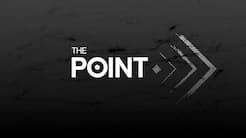Roy Mundine reckons the army was good for him and maybe he was good for the army.
He first joined up in 1958 as an 18 year-old, twice going to Vietnam. Now the army's Aboriginal elder, he recalls that with relatives in uniform he always wanted to join up.
In a society which didn't even officially recognise indigenous people until 1967, a far from perfect defence force stood out as an equal opportunity employer.
The Aboriginal and Torres Strait Islander experience of military service is explored in the new For Country, For Nation exhibition at the Australian War Memorial.
Mr Mundine, a Bundjalung man from Grafton in northern NSW and brother of former Labor Party national president Warren Mundine, reckons the army was good for him even though he was severely wounded in Vietnam.
"That's right, and I was probably good for the army too. I enjoyed myself," he said.
He retired as a warrant officer, but former Army chief David Morrison subsequently head-hunted him to be the army's inaugural Aboriginal elder.
That job involves representing indigenous men and women and advising army leaders on indigenous issues.
And his advice for any young indigenous person contemplating a military career?
"I would say, if you are joining the army, make sure you keep studying. An education is your pathway through life. It may be only a piece of paper but there's other things you build on it," he said.
As many as 1000 indigenous men fought for Australia during World War I, even though their enlistment was technically forbidden. They served in every conflict since, receiving the same pay and same treatment as every other soldier.
Memorial director Brendan Nelson said that only four or five generations after the arrival of the First Fleet indigenous Australians did everything they could to enlist in the Australian Imperial Force.
"They fought and died under our flag, in our uniform and in the name of Australia. And then they returned to a desperately unequal nation," he said.
Exhibition curator Amanda Jane-Reynolds said the memorial had been considering such an exhibition for a number of years, with work starting nine months ago.
For more recent conflicts, there was an abundance of exhibition material, including artefacts and artworks, but not so for WWI, from which indigenous veterans returned to the poverty of their communities.
"We are lucky we do have some stories. We have a beautiful Bible and some medals. We are working to build that collection," she said.
For Country, For Nation will remain open for the next year. After that it's hoped to turn it into a touring exhibition.
RECOMMENDED ARTICLE:

Black Diggers Project brings Indigenous soldiers to the stage

